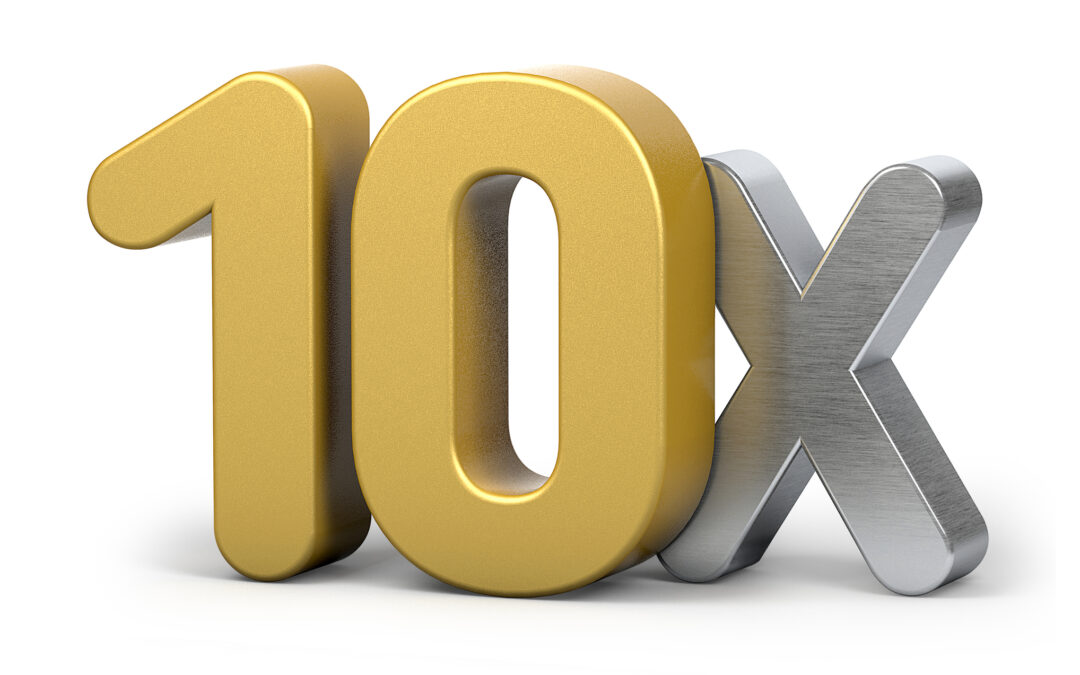If you’re an entrepreneur you’ve no doubt heard from a buddy about qualified small business stock (“QSBS”). QSBS is stock in a C corporation that if held for more than five years can result in a 0% federal tax rate on a significant amount of gain. See here for more details.
How much gain can benefit from the 0% rate you ask?
The greater of $10M or 10x the value of the property you contributed in exchange for your stock.[1]
One popular way to take advantage of the 10x rule is to form your new company as an LLC taxed as a disregarded entity or a partnership and to convert[2] to a C corporation at a time when the LLC is worth more than $1M but less than $50M.[3]
The downsides to this approach are that your 5 year-holding period doesn’t start until the date the C corporation stock is issued and the built-in gain at the time of the LLC conversion does not receive the 0% tax rate.
Below are three hypotheticals illustrating the interplay of these rules.
Hypo 1: Aaron receives his LLC interest in 2022. The LLC converts to a C corporation in 2024. Aaron sells his C corporation stock which qualifies as QSBS in a taxable transaction in 2028. He does not receive the favorable 0% rate on any of the gain because he did not hold the stock for more than 5 years. This despite the fact he received his original LLC equity 6 years prior to the sale of the stock.
The result would have been better if Aaron had initially formed a C corporation rather than starting as an LLC.
However, if Aaron rolls his gain within 60 days into another qualified small business he can still possibly obtain the 0% tax rate. See here for more details regarding tax code Section 1045 rollovers.
Hypo 2: Ben owns 90% of an LLC taxed as a partnership. He has zero basis in his partnership interest and the partnership has zero basis in its assets. The LLC converts to a C corporation in 2024 when it is worth $30M. Ben sells his C corporation stock, which qualifies for QSBS benefits, for $20M in 2030. The entire amount is taxable at regular long-term capital gains rates because the gain existed before the LLC conversion.
The result would have been better if Ben had initially formed a C corporation rather than starting as an LLC.
Hypo 3: Chris owns 90% of an LLC taxed as a partnership. He has zero basis in his partnership interest and the partnership has zero basis in its assets. The LLC converts to a C corporation in 2024 when it is worth $30M. Chris sells his C corporation stock, which qualifies for QSBS benefits, for $300M in 2030.
- The first $27M (i.e., 90% x $30M) is taxed at regular federal long-term capital gains rates of up to 20%, plus net investment income tax of 3.8%, plus applicable state tax[4];
- The next $270M of gain is taxed at a federal rate of 0% + applicable state tax, if any; and
- The final $3M of gain (i.e., $300M – $270M – $27M) is taxed at regular federal long-term capital gains rates of up to 20%, plus net investment income tax of 3.8%, plus applicable state tax.
In this example, the favorable QSBS rate applies to $270M instead of $10M. This means Chris saved nearly $62 million (i.e., $23.8% x $260M) in federal tax by starting as an LLC. This is the result people have in mind when using this strategy.
Valuation
A question that founders often struggle with is how to properly value contributed assets for purposes of the QSBS 10x limit. Say for example, there will be a financing at the time of the LLC conversion with a pre-money of $40M. The conversion is being effectuated by the LLC’s contribution of all its assets to the new C corporation in exchange for all of the common stock of the new C corporation. The 409A valuation to be effective immediately post-closing of the financing reflects an aggregate common stock value of $30M which equates to $19.5M on a per share basis after taking into account a 35% lack of marketability discount.
So, is the value of the contributed assets $40M, $30M, or $19.5M? Reasonable minds can differ. I believe it’s either $30M or $19.5M.
You can also take advantage of additional QSBS gain exclusion by gifting stock to a child or a trust that can each get their own $10M cap. If you’d like to explore this strategy in more detail, we recommend you contact a trust and estate attorney.
Mike Baker frequently advises with respect to qualified small business stock. He possesses a breadth and depth of experience in tax and employee benefits & compensation law that spans multiple decades. For additional information, please contact mike@mbakertaxlaw.com.
[1] IRC Section 1202(b)(1)(B) “10 times the aggregate adjusted bases of qualified small business stock issued by such corporation and disposed of by the taxpayer during the taxable year. For purposes of subparagraph (B), the adjusted basis of any stock shall be determined without regard to any addition to basis after the date on which such stock was originally issued.”
IRC Section 1202(d)(2)(B) “Treatment of contributed property. For purposes of subparagraph (A), the adjusted basis of any property contributed to the corporation (or other property with a basis determined in whole or in part by reference to the adjusted basis of property so contributed) shall be determined as if the basis of the property contributed to the corporation (immediately after such contribution) were equal to its fair market value as of the time of such contribution.”
[2] Warning: Such conversions are not always tax-free. See here.
[3] Warning: If you convert when the LLC is worth more than $50M, the C corporation will not be a qualified small business.
[4] Most states do not tax QSBS eligible gain. Unfortunately, California does.

